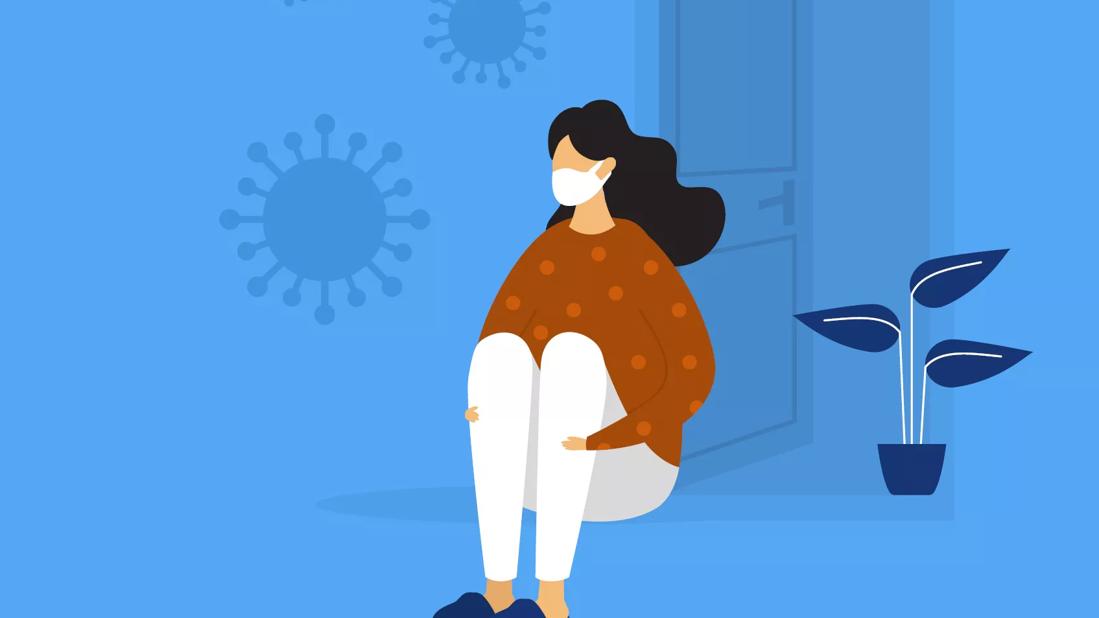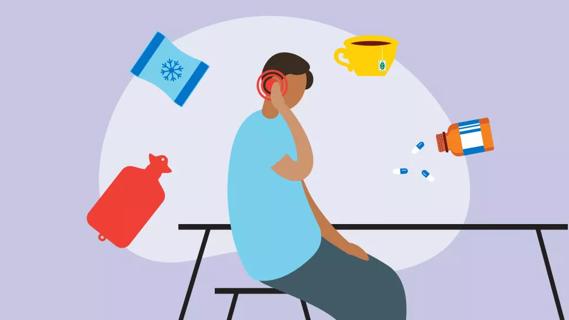Advertisement
Trying to find ‘normal’ again as the pandemic lingers into its third year

With the omicron surge in our rearview mirror, there are some signs that the COVID-19 pandemic may finally be loosening its grip on the globe. But while case rates are lower here in the United States, they’re still elevated in other parts of the world, and certain members of the population might need a second booster.
Advertisement
Cleveland Clinic is a non-profit academic medical center. Advertising on our site helps support our mission. We do not endorse non-Cleveland Clinic products or services. Policy
There are a lot of mixed messages to interpret, and that can cause a lot of anxiety and stress as we shift to this next stage, one in which mandates are rolled back and more pre-pandemic behaviors — like in-office work and no mask requirements — return. To get an idea of how we can handle this transition, we spoke to psychologist Matthew Sacco, PhD.
First and foremost, it’s important to remember that COVID-19 hasn’t gone away. It’s OK to still feel anxious about infection, and it’ll take time for some to adjust to feeling safe out in public after two years of isolation and surges.
“We’re creatures of habit,” says Dr. Sacco. “Just as some of us had issues adjusting to new behavior at the beginning of the pandemic, some of us are going to need extra time to adjust to life as we transition out of the pandemic.”
Additionally, many people developed new routines during the pandemic, settling into different work and school environments and adjusting to those new ways of life. Now, routines are shifting again for many of us, even if we’re not returning to exactly how we were before COVID-19. And that means more stress adjusting to yet another new routine.
Dr. Sacco also says we shouldn’t discount being over-stimulated in returning to a pre-pandemic routine and setting. “If you’ve been working or staying at home, you can mostly control that environment. But when you’re back at the office or out in the world, there’s more to the environment — including new sights, sounds and smells — that can be over-stimulating.”
Advertisement
As you’re readjusting to this setting that you’ve been away from for two years, your brain has to work overtime to process everything. When you’re already removed from your comfort zone, this over-stimulation can cause your anxiety to spike.
Most of us have never been through a pandemic, so we don’t know the process of reintegrating to normalcy after one. “Everything that a person might be feeling should be considered a ‘normal’ range of reaction to a very abnormal event,” says Dr. Sacco.
Knowing yourself and your emotional tendencies is key to dealing with everything you feel during this surreal time. “The measuring stick should be how much difficulty your emotional adjustment is causing you day to day,” notes Dr. Sacco. “If you’re able to manage it and you feel you’re moving forward in a positive way, just maintain some self-care exercises.”
If your emotions rise to the point where they feel overwhelming, though, consider reaching out to a professional therapist for help. “When it’s interfering with your ability to get through the day, that’s when you need that extra help.
“Control what’s yours to control and trust that what you’re doing is part of the process,” he continues. “Make sure you’ve received both your flu shot and your COVID-19 vaccine and boosters. And remember that everything is not going to be OK just because you say. It takes time and can sometimes be slow. Take care of yourself and be confident in what you’re doing to take care of yourself.”
Masks and standing six feet from one another have been two of the most consistent parameters of protecting ourselves from spreading COVID-19. But states and cities are now rolling back mask mandates and social distancing is slowly becoming a thing of the past.
It’s important to remember that it’s taken us two long years just to get to this point, says Dr. Sacco. “You need to cut yourself some slack because this is still going to take a little time to see what this is all going to look like.”
He adds, “While we go through this experience to see what we’re calling ‘the new normal’ looks like, you should work at your own pace.” In other words, if you find yourself out and about and seeing people not wearing masks in crowded areas, that doesn’t mean you have to follow suit. It’s all about doing what’s best for you and your family.
For many, the pandemic ushered in a new era of working from home. But as case rates stabilize across the country and vaccination rates increase, some are returning to in-person work for the first time in two years. With the virus still circulating and another round of adjustment on deck, some are experiencing a rise in anxiety.
Dr. Sacco recommends looking for flexibility in your work schedule to see if you can make a slower return to the office. “Talk to your supervisor and see if you can start by maybe returning to the office for a day or two a week to start,” he suggests. “Some places are adopting that hybrid home-and-office model and that may be easier to handle.”
Advertisement
If you’re not able to slow your roll back into the office, though, it’s best to take time to plan and make sure you’re as comfortable as possible. “Make sure you’re controlling what you can,” Dr. Sacco advises. “If you’re anxious about exposure, wear your mask, wash your hands often and do your best to keep your distance as much as you can.”
Again, Dr. Sacco says to be kind to yourself. “Give yourself some grace and patience for getting back into the routine completely. And don’t expect to go right back to how it was two years ago.”
Here are a few ways you can find calm when your anxiety starts to spike in the moment:
Advertisement
Again, it’s all about focusing on what you can control and setting expectations. “If you’re experiencing a lot of anxiety about getting back into crowds, maybe your first foray back shouldn’t be a large sporting event,” says Dr. Sacco.
Instead, focus on small, consistent steps of accomplishment, understanding that there may be some setbacks along the way. In the end, it’s about being kind to yourself and putting yourself in situations in which you feel the most comfortable before taking the next step.
Advertisement
Learn more about our editorial process.
Advertisement

Your BFF is wonderful, but they aren’t a professional therapist

Infection and inflammation can cause you to lose your voice and have other voice changes until you’re fully healed

A COVID-19 infection can bring on depression or anxiety months after physical symptoms go away

Ground yourself in evidence, name your thoughts out loud and meet yourself in the middle to help defuse worst-case scenarios

Start by naming your emotions, centering your physical symptoms and identifying how your past impacts your present

Biological changes, family issues and work problems may cause you to reevaluate your life and make changes for the better

Just like the flu, COVID-19 continues to evolve every year with new and smarter variants

Among its other effects, discriminating against people with disabilities hurts their health and well-being

Not all ear infections need antibiotics — cold and warm compresses and changing up your sleep position can help

A glass of lemon water in the morning can help with digestion and boost vitamin C levels, and may even help get you into a better routine